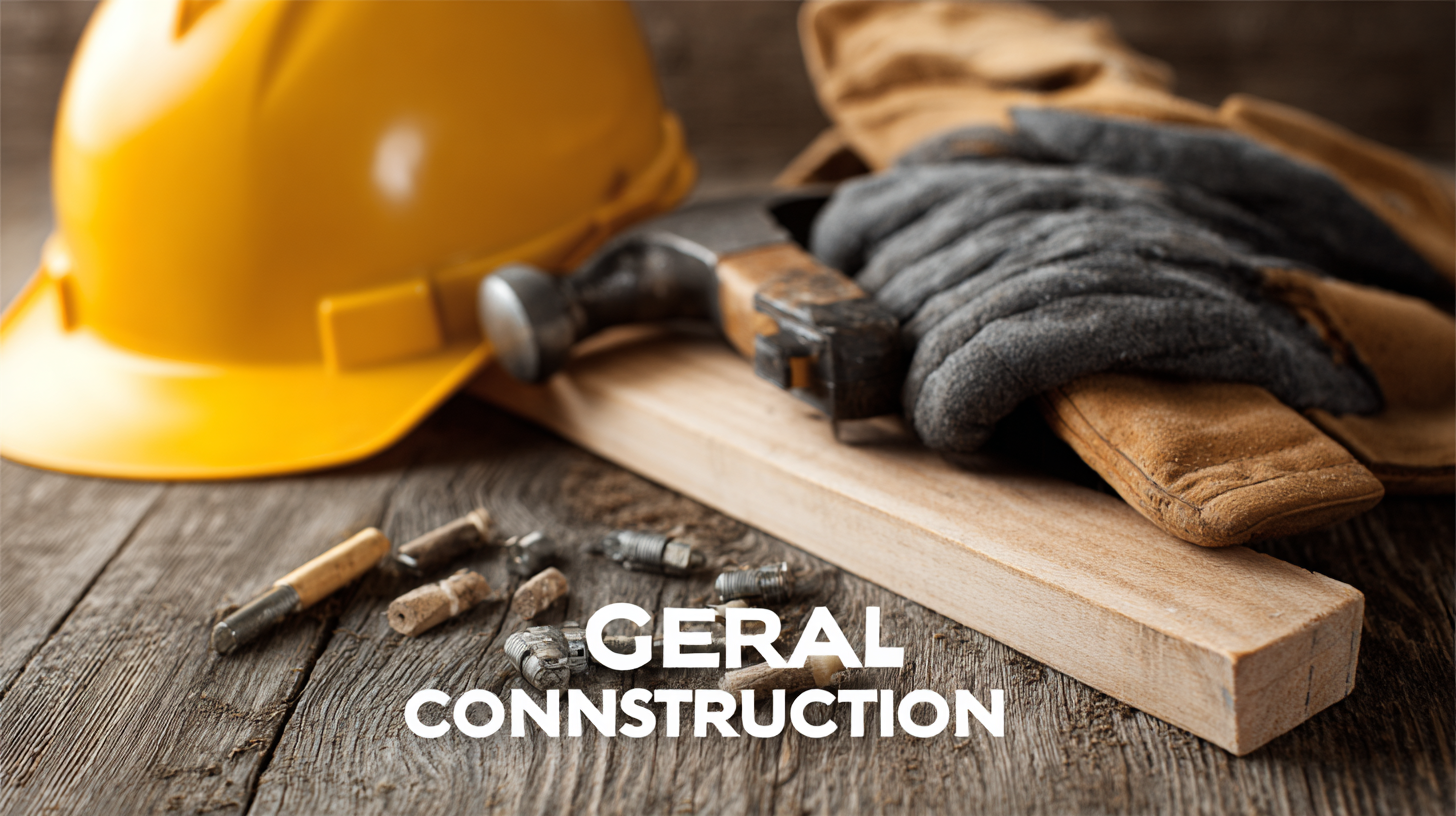7 Best General Construction Techniques You Should Know
In the ever-evolving world of construction, mastering essential techniques is crucial for both new and seasoned builders. "General Construction" encompasses a wide range of skills and knowledge that can significantly impact the success of a project. From understanding foundational methods to effective project management, having a solid grasp of general construction techniques can enhance efficiency and quality while minimizing costs.

In this ultimate guide, we will explore the seven best general construction techniques that every contractor and DIY enthusiast should know. Whether you aim to build your dream home or undertake renovations, understanding these fundamental practices will equip you with the tools needed for successful construction ventures.
Join us as we delve into these indispensable techniques that can transform your approach to building and ensure lasting results.
Understanding the Importance of Quality Craftsmanship in Construction
Quality craftsmanship is a cornerstone of successful construction projects. According to a report by the Construction Industry Institute, up to 30% of a construction project’s success hinges on the quality of workmanship. This emphasizes how skilled labor not only contributes to the aesthetic appeal of a structure but also significantly impacts its longevity and safety. High-quality craftsmanship ensures that materials are used efficiently and effectively, minimizing waste and enhancing the building's performance over time.
Moreover, the importance of quality craftsmanship can be observed in financial metrics as well. The National Association of Home Builders indicates that homes built with superior craftsmanship can retain up to 25% more value than those with subpar construction standards. This is particularly relevant in today’s market, where buyers are increasingly discerning, favoring properties that exhibit attention to detail and robust building practices. Investing in quality workmanship not only fulfills regulatory standards but also cultivates trust with clients, paving the way for repeat business and referrals in an increasingly competitive environment.
Importance of Quality Craftsmanship in Construction
Essential Building Materials and Their Impact on Structural Integrity
When it comes to construction, the choice of building materials significantly influences the structural integrity of a project. From the strength of concrete to the flexibility of steel, each material plays a crucial role in ensuring that a structure can withstand various stresses over time. For instance, reinforced concrete is a popular choice due to its high compressive strength and durability, making it ideal for foundations, walls, and slabs.
Tip: Always consider the environmental impact of materials. Opt for sustainable options like bamboo or recycled steel, which not only reduce your carbon footprint but also offer superior strength-to-weight ratios.
As you select materials, it's essential to understand their properties and how they interact with one another. For example, using high-quality insulation materials can affect the building's energy efficiency and longevity. Likewise, choosing the right type of roofing material is critical, as it protects the structure from weather elements and contributes to overall aesthetic appeal.
Tip: Regularly assess your construction materials for wear and tear during maintenance checks. Addressing issues promptly can significantly prolong the life of the building and maintain its structural integrity.

Innovative Techniques for Sustainable Construction Practices
In today’s construction landscape, sustainable practices have moved from being optional to essential. With the increasing emphasis on environmental responsibility, innovative techniques are revolutionizing how we approach building. For instance, the adoption of green construction procurement can drive economic growth while enhancing logistics and innovation in the sector. A recent study highlights that effective procurement strategies are pivotal in integrating sustainability, improving service management, and fostering innovation practices in construction.
Tips for sustainable construction include investing in eco-friendly materials like new green cement, which has proven to be stronger than traditional options. Incorporating innovative solutions, such as recycled construction materials, can significantly reduce waste and lower carbon footprints. As we approach 2025, trends like modular construction and AI integration are poised to redefine efficiency and sustainability in building practices.
To maximize the impact of these advancements, professionals in the industry should stay informed about evolving regulations that prioritize sustainability. The EU's new Construction Products Regulation reflects this shift, enabling better transparency and carbon footprint assessments for building materials. Embracing these insights not only benefits the environment but can also enhance business performance in an increasingly competitive market.
Key Safety Protocols Every Contractor Should Implement
 When it comes to construction projects, implementing robust safety protocols is essential for every contractor. A solid safety plan not only protects workers but also enhances efficiency and reduces liability risks. One key protocol is conducting regular safety training sessions for all crew members. This ensures that everyone is informed about the latest safety practices and equipped to handle potential hazards on site.
When it comes to construction projects, implementing robust safety protocols is essential for every contractor. A solid safety plan not only protects workers but also enhances efficiency and reduces liability risks. One key protocol is conducting regular safety training sessions for all crew members. This ensures that everyone is informed about the latest safety practices and equipped to handle potential hazards on site.
Additionally, contractors should adopt the habit of performing daily safety inspections before work begins. This includes checking equipment, identifying any potential risks, and making necessary adjustments to eliminate hazards. Proper personal protective equipment (PPE) usage is another critical element; ensuring that all workers wear appropriate gear—such as helmets, gloves, and eye protection—can significantly minimize the chances of accidents.
An emphasis on communication and reporting near misses or unsafe conditions can further bolster a culture of safety on the job site. By prioritizing these key safety protocols, contractors can foster a safer working environment that ultimately benefits everyone involved.
The Role of Technology in Improving Construction Efficiency and Precision
In today’s fast-paced construction environment, technology plays a crucial role in enhancing efficiency and precision. With advancements like Building Information Modeling (BIM), construction professionals can visualize projects in a 3D space, anticipate challenges, and streamline workflows. This digital approach allows for real-time collaboration among architects, engineers, and contractors, minimizing misunderstandings and delays.
Adopting technology doesn’t stop at design; it extends to on-site operations as well. Tools such as drones and laser scanning equipment provide accurate site assessments, helping to ensure that measurements are precise and progress is tracked accurately. By integrating these technologies, teams can reduce waste, cut costs, and ultimately deliver higher-quality results.
Tip: Invest in training for your team on the latest construction technologies. This ensures that everyone is well-equipped to utilize these tools effectively, leading to enhanced productivity and a smoother project execution.
Tip: Regularly update your project management software to leverage new features that can assist with scheduling, budgeting, and resource allocation, ensuring your project stays on track and within budget.
